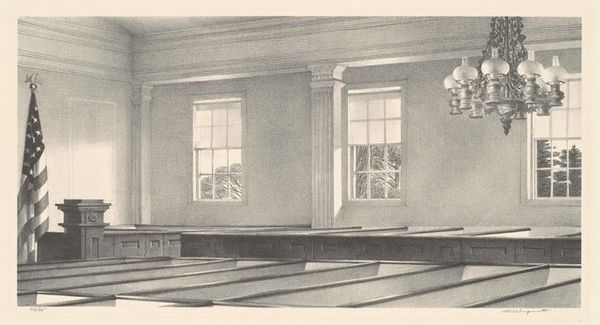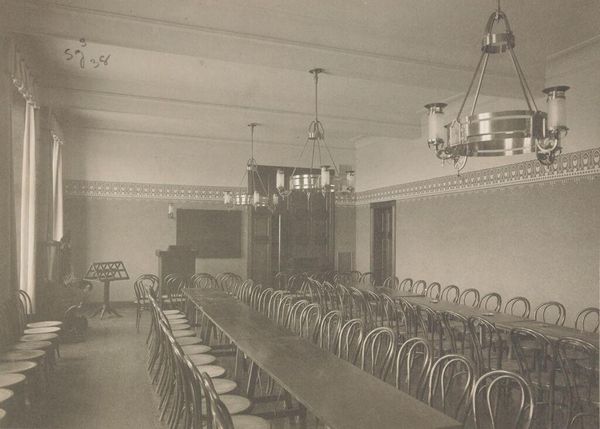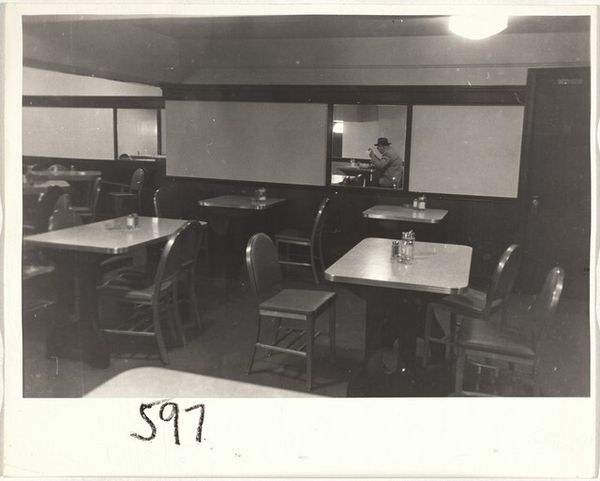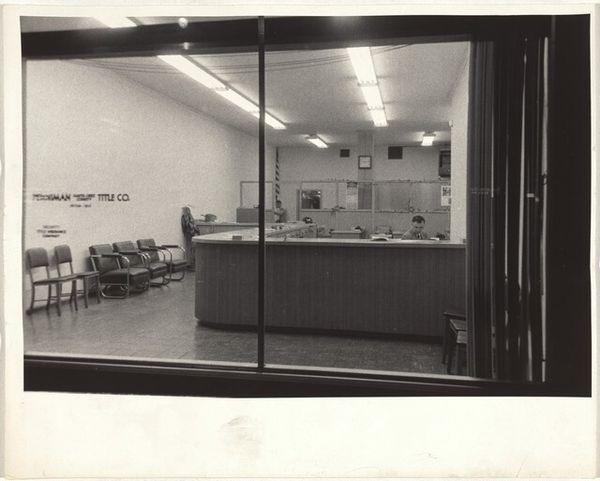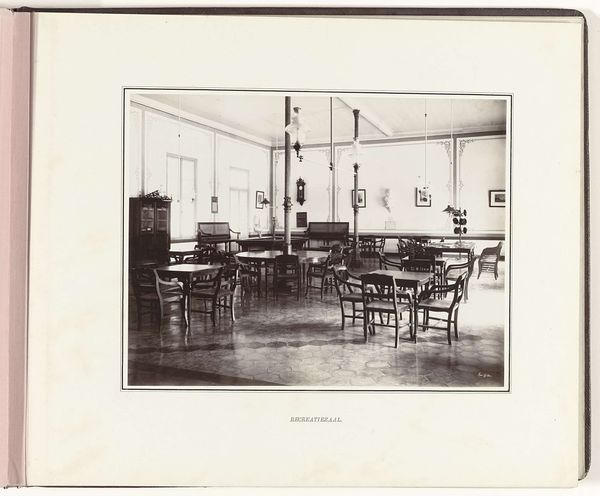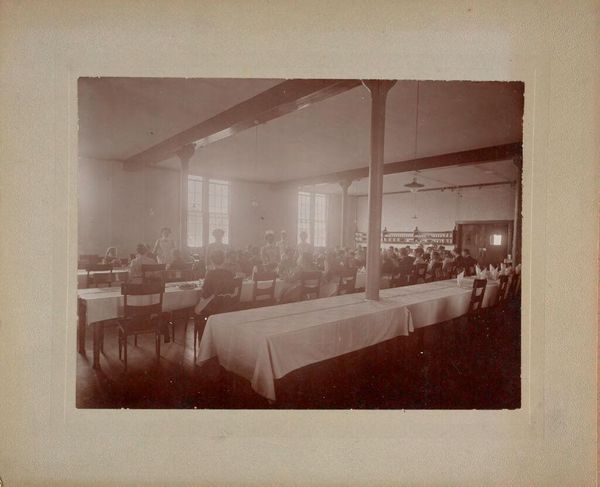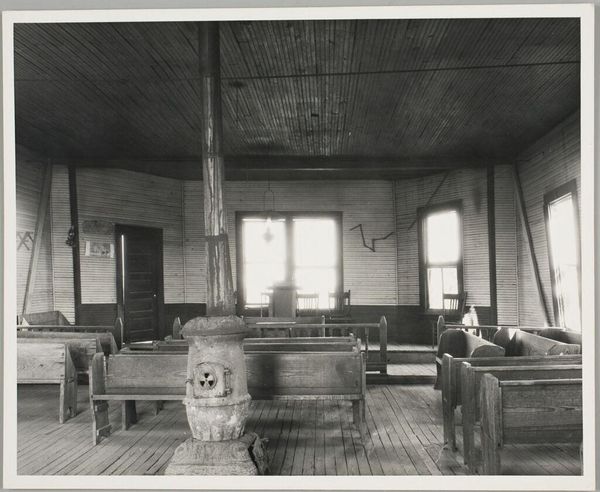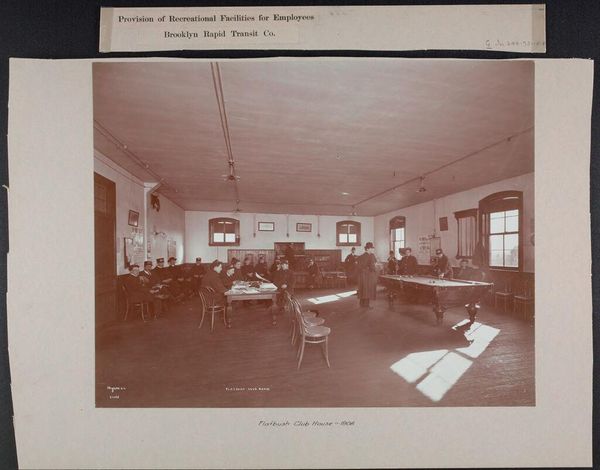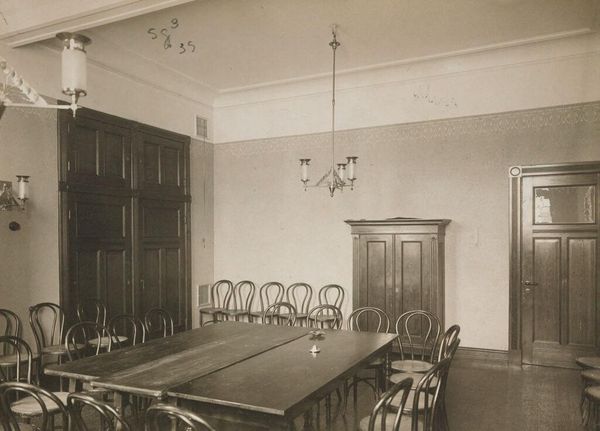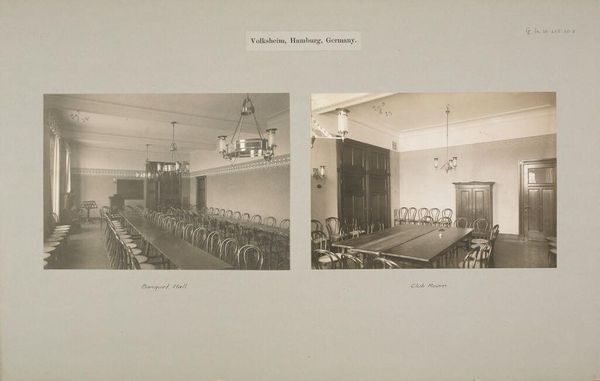
drawing, print, graphite
#
drawing
# print
#
landscape
#
geometric
#
graphite
#
academic-art
#
realism
Dimensions: image: 23.5 × 42.39 cm (9 1/4 × 16 11/16 in.)
Copyright: National Gallery of Art: CC0 1.0
Curator: This is Stow Wengenroth’s “Meeting House,” a graphite print from 1940. What’s your initial impression? Editor: It's incredibly serene. There's a real emphasis on geometry with those rows of pews receding into space, offset by that gorgeous chandelier, but the real magic for me lies in how Wengenroth renders texture—the granular wall, the cool smoothness of the pew tops... How was that effect achieved? Curator: Wengenroth was a master of graphite drawing. He built up layers of meticulous shading to create tonal richness. This evokes the austerity often associated with meeting houses. Those simple benches hint at doctrines centered on personal faith and community. The chandelier offers a symbol of both enlightenment and congregation. Editor: Absolutely, there’s a real tension here. This isn’t just an image of architectural space; it reflects deeper concerns with history, labor, and craft. Did he visit the depicted building to generate preparatory sketches, and what materials and expertise went into producing a lithograph as detailed as this? We’re talking hours and hours. Curator: These meeting houses historically represent a democratic spirit, serving not just as places of worship but as sites for town meetings and collective decision-making. Even now they still echo historical beliefs of those early American congregations. It could suggest continuity. Editor: Exactly! I see the material realities supporting the art: the graphite mined, the paper pulped, the artisan traditions encoded. It allows us to challenge high/low distinctions; what stories about rural industry, architecture, labor conditions might the artwork hide? Curator: It prompts contemplation. How communities shape space, and how space, in turn, shapes communities. That intersection creates complex symbols that influence culture through the passage of time. Editor: Agreed. Wengenroth prompts us to reconsider the work involved in making a simple place like this, an intersection between craft and spirit and between tradition and modernity. Curator: Ultimately, a study in quiet persistence, for us and maybe for Wengenroth, connecting tangible reality and our intangible inheritance. Editor: I’m glad you agree. Let’s keep exploring that rich connection.
Comments
No comments
Be the first to comment and join the conversation on the ultimate creative platform.
